Aikido Founder Morihei Ueshiba at the Noma Dojo, around 1936
In 1938 the Prime Minister of Japan was Prince Fumimaro Konoe (近衛 文麿) – he was a patron of Morihei Ueshiba and served on the board of directors for Morihei Ueshiba’s pre-war Kobukai Foundation.
In 1938, when he began training with Morihei Ueshiba at the Kobukan Dojo in Tokyo, Mr. Kimura was a 19 year old Japanese exchange student from Dairen (大連 / Dalian), the Japanese occupied seaport in Northeast China. At the time the art was called “Ueshiba-ryu Aiki-jutsu”, and the students were a laundry list of influential political and military figures.
What follows is the second part of a two part English translation of his memories of that time dated June 24th 1987 which originally appeared in the tenth anniversary edition of “Aikido Kodaira” (「合気こだいら」十周年記念誌), published on October 30th 1988. You may wish to read Part 1 before reading this section.
“Kamae” from the technical manual “Budo”, Morihei Ueshiba 1938
Aikido Memories (合気道の思い出)
4) Sensei’s Teachings
A – Kamae
Do not face the enemy straight on. Always, take a Hanmi-Irimi stance and make the area facing the enemy as small as possible.
(Translator’s Note: see “Morihei Ueshiba, Budo and Kamae” – Part 1 | Part 2 | Part 3 for a discussion of Kamae in the 1938 technical manual “Budo”)
B – Walking
In walking step with six directions (“roppo” / 六方) – lift your thighs when you move, just like the Kabuki actors walk.
(Translator’s Note: see the above articles “Morihei Ueshiba, Budo and Kamae” for more on six directions. Here is a short explanation from William Gleason Shihan, 7th Dan Aikikai and founder of Shobu Aikido:
“Stretching the spine upward and down to become rooted in both Heaven and earth, you establish yourself at the center of the six directions. This is Irimi, the spirit of Aikido; sending your ki out in all directions to infinity; our own intention meeting and merging with the universal will. O-sensei called it the “Divine Cross.” This is the kototama of Tou or Tao, in Japanese pronounced Dou. It is the fulfillment of Michi, the highest level of Aikido. It is also the elimination of duality, or separation. It is called Gokui, “exteme will” or “radical faith.””)
C – Opening the Body
When avoiding the enemy’s sword one does not just open their body, one must always rotate far enough to match the enemies back. If one doesn’t do that then even though they think that they are avoiding the sword it will not be enough and they will be cut.
D – The Principle of Aiki and Kokyu-ryoku
In Aiki one stretches thin spider webs between oneself and the enemy, these must not be cut. In other words, if the enemy comes to cut your head then cut their head, if they come to cut your body then cut their body. Regarding this, I was told not to do things like cutting their body when they come to cut my head. Then, when I aked “Doesn’t that become Ai-uchi (“mutual-striking/kill”)?”, Sensei said “No it doesn’t. The person with the strongest Kokyu-ryoku will cut down and win.”. In other words, the strength or weakness of one’s Kokyu-ryoku decides the contest.
E – The Distance for Live Swords
In the case where an enemy comes at you with a live sword first grab some dirt off the ground (actually, it’s OK even if there’s nothing) and throw it in the enemy’s eyes at the same time leaping forward. One must turn their eyes towards them with the feeling of actually cutting the enemy. If you don’t have the feeling of cutting the enemy then their line of sight will not move.
Even when you face each other with live swords from a distance of 15-20 feet one feels as if the enemy is directly if front of their eyes, so take a sufficient distance. If one fights from a distance of three feet than the contest has already begun, one or the the other has been run through and died. For that reason, one must not do that kind of training.
F – Move before Sen-no-sen
(Translator’s Note: “Go-no-sen” – moving after the attack reaches you, “Sen-no-sen” – moving at the same time as the attack but before it reaches you, “Sen-sen-no-sen” – moving before the attack even begins).
In a contest, move before the opponent’s Ki. Moving your body after the opponent has cut is too late. It is because one makes the opponent think to cut that they move their body!
G – Training Kokyu-ryoku (“Breath Power”)
One of the Sensei’s favorite phrases when working with students was “we develop our breathing with each other”. The meaning of these words is that both Sensei and the students worked together to help each other to develop Kokyu-ryoku. This is not the muscular power that everybody knows of, it means the Ki-power (気力), the power of the Mind (心力), that is unique to Aikido.
警視庁の三郎三傑
The “Three Swordsman of the Metropolitan Police”, 1939
From left: Kyotaro Takahashi (高橋赳太郎), Takano Sasaburo (高野佐三郎)
Kawasaki Zenzaburo (川崎善三郎)
5) Sensei’s Extraordinary Skills
A – A contest with Sasaburo Takano and live swords
This is a story that I heard from Ishii-sempai.
When Sasaburo Takano-san, who I mentioned previously, became a student he asked Sensei “Please teach me a move – what should I hold?”. Sensei said “Hold this!”, and gave him a Japanese sword. When Takano-san asked “Sensei, what will you be holding?” Sensei replied “I’m OK with bare hands”. When Takano-san heard that he said “I am the world-famous Sasaburo Takano. Do you think that I’m an idiot, to give me a live sword and tell me that you’re OK with bare hands? I’ll cut you down and kill you!” while brandishing the sword. At that moment, Sensei advanced and halted Takano-sans dominant arm with his bare hands, hitting it so hard that Takano-san dropped the sword without realizing it.
It was just like something out of a story book.
Field Marshal Shunroku Hata
(Translator’s Note: 畑俊六 – Shunroku Hata was commanding general of the Central China Expeditionary Army and served as a Senior Aide-de-Camp to Emperor Showa as well as Minister of War.)
B – Demonstrations
Sensei would sometimes give demonstrations. Whenever there were demonstrations we’d get wooden bento lunch boxes from Isetan and a lot of Sake, so it was really something to look forward to for a student like me living in a boarding house. One time his excellency Field Marshal Shunroku Hata (元帥陸軍大将畑俊六) came for a demonstration. What’s more, at the time this person was the commanding general of the Central China Expeditionary Army (中支那派遣軍), a person of unbelievably high position, so the other rank and file army officers were all on pins and needles.
The content of the demonstration was so varied that it would be impossible for me, with my limited writing skills, to express, but I would like to explain just one part of it, as best I can.
The Sumo wrestler Tenryu, around 1929
It was the part of the demonstration with Wakuta-san (Translator’s Note: the Sumo wrestler Tenryu), whom I spoke of previously, as the opponent. First, Sensei stood in front of Wakuta-san and said to the seated spectators “Now I will throw Wakuta-san without touching him”. At that point a commotion arose in the hall. That is to say, how in the world would one be able to throw the large and robust Wakuta-san with a weight of 33 kan (approximately 274 lbs) and a height of 6 shaku (approximately 6 feet) without touching him? Everyone swallowed without thinking about it.
The one who seemed the most surprised was Wakuta-san himself. Later Wakuta-san said “I didn’t plan anything with Sensei, so I was bewildered as to how I would be thrown without being touched. That being said, I didn’t want to embarrass Sensei.”.
To get to the point – Sensei, with his tiny body, stood in front of the large Wakuta-san and turned towards him. “Wakuta-san, grab this” he said, offering his left lapel. Wakuta-san did as he was told – since he was taller he stretched out his right hand from above and tried to grab the left lapel. At just the same speed, Sensei turned his body to the back left, and as Wakuta-san’s right fist came down Sensei was suddenly sitting in seiza on the tatami. At that moment the position of Wakuta-san’s right fist froze in mid-air, and with the right fist as the center Wakuta-san’s body described a large circle and he was thrown forward with a thump. He looked just like a large whale thrown up on the beach.
Let us say that this is a glimpse of correct Aikido technique. In brief, it is to manipulate the opponent like a puppet. This is really not something that can be done by ordinary people.
C – Sword Training
One day Sensei said to me “Kimura-san, let’s train with the sword today. Go get that shinai.”, so I hurried over to the rubber bag in the corner of the dojo and brought back two shinai. I gave one to Sensei, then held the other and took my Kamae.
At first Sensei cut my shinai lightly from the left, so the tip of my sword swayed widely to the right. Then Sensei said “No good. Hold the sword firmly.”, so this time I gripped the hilt of the shinai strongly. When I did that he cut my shinai from the left again. How would it be this time? Before I realized it, I fell from my hips with a thud.
Sensei said again “No good. Stand with your hips firm.”. Determined not to fail and be scolded again I took a solid stance with both my hands and hips. This time Sensei took his sword, wound up my shinai in a spiral and threw it some fifteen feet behind him. I was dumbfounded.
In a word, I understood that Aikido lightly attacks the unpreparedness of the opponent. Then Sensei said “Training is over for today.”, and I didn’t get a chance to have anything to hold onto.
Prince Kaya Tsunenori (Kaya-no-miya-tsunenori-o) in the 1930’s
for whom Morihei Ueshiba’s technical manual Budo was compiled
D – Kaya-no-miya-sama (賀陽宮様)
This is a story of a time when Sensei took Shioda-san and Okubo-san (of the nobility, son of Tadayori Okubo and a student at Gakushin University) to the residence of Kaya-no-miya-sama for training.
Sensei would first use Shioda-san as his partner and explain the Aikido technique, and after observing that the Prince would partner with Okubo-san for training.
Then, and this a story from Shioda-san, Sensei got excited at being in the home of the nobility, the blood rushed to his head and his face became bright red. Wanting to show his skills, he grabbed Shioda-san’s left shoulder with his right hand and threw him the length of 8 tatami (about 48 feet).
Then, as one would expect from Shioda-san, when he returned to the dojo he grabbed me in revenge and threw me the length of 3 tatami mats (about 18 feet). As I was gliding through the air at the time I felt as if my breath were going to stop. I was young, and a san-dan in Judo. I was accustomed to being thrown so I got through it without a problem, but if it happened now I’m sure that my bones would shatter.
I don’t know whether or not someone like Sensei, who can grab a person with one hand and throw them 48 feet is a master or not, but I can certainly say that they are someone to be respected.
E – Suburi
Sensei was always swinging his oak bokuto. Of course, at those times there would be a hum in the air from the sound of the cutting, but what was surprising was that with each cut the last 6 inches of the bokuto would bend down about 6 inches. Seeing that, we’d whisper to each other “If I could do that it would be out of this world!”. When we stood up to face Sensei both of his eyes would shine – it was very frightening.
F – Sharp Intuition
When Sensei went into the back room Shioda-san would have me try out Judo techniques on him and research into counter techniques. Each time Sensei would stick his head out from the back and scold us “Judo is something that came from China, so it’s filthy!” (「柔道は支那から来たものだからケガラワシイ。」Translator’s Note: the term used here for “China” by Morihei Ueshiba is often considered to be derogatory.). It was always mysterious to us how he could know what we were doing from the back room.
G – Techniques are Unnecessary
Sensei would sometimes say that techniques are unnecessary. He would rest his palm flat on top of one of the student’s shoulders and their face would suddenly become bright red, their hips would break and they would fall down to the tatami. I think that this was an effect of Kokyu-ryoku.
6) What I Liked About Learning Aikido
I worked at a construction company for many years, and when I was young I walked around inspecting job sites for eighteen years. In the metropolitan areas the workers were quiet, but in the mountains and the remote areas they would display their ferocity. There were many fights and I was attacked a few times with knives, but thanks to learning Aikido I used Hanmi-Irimi to open my body and was always able to control them without injury.
7) Aikido in the Old Days
A – The monthly tuition was 5 yen.
We would be scolded if we just handed over a 5 yen note in the open. We’d always place it in a an envelope (“noshibukuro” / 熨斗袋) and one of the uchi-deshi would place it on top of the Sanpo (三宝, a small stand). Then the uchi-deshi would raise it above their eyes and place it reverently before the altar.
B – We had to wear a hakama over our keiko-gi from the beginning.
We were scolded and told that the close fitting trousers of the Judo style were impolite.
C – There was no training from Shikko (膝行).
Aikido in the old days was to throw them down and kill them, everything was throwing techniques, I was told to throw them at an angle that would drive their head into the ground. When it was time to be thrown by Sensei during training we’d scramble away. We didn’t train until the throwing was over. so we didn’t get taught.
D – There were no ranks.
There was only the Menkyo Kaiden (免許皆伝). When I asked Sensei what kind of a person could become a Menkyo Kaiden he said that ordinarily two people with exceptional skills would face each other in front of him holding real knives (tanto) and cross swords. If Sensei acknowledged their skill then he would grant them Menkyo Kaiden. In other words, this was a discussion about something that I would never able to become, so I gave up on such overambitious things.
Also, I have never heard of anyone becoming a Menkyo Kaiden. However, I have heard that there was one of Matsuhei Mori-san’s juniors who started in Showa year 18 (1943) that became an Aikido tenth dan.
I think that it was around Showa year 30 (1955) that I saw an article in the newspaper about Aikido ni-dans and so forth, so I went to Aikido Hombu in Wakamatsu-cho and spoke to Kisshomaru-san – “Recently there was something written in the newspaper about there being dan ranks in Aikido, please correct them.”. When I did that Kisshomaru-san said “Actually, Kimura-san, we made dan ranks in Aikido after the war in order to stimulate growth.”, and that was the first time that I ever learned of the establishment of a dan ranking system (段位制度).
Until recently, in my pride as part of the pre-war group, I had continued to wear a white belt, but when a white belt throws a black belt they usually get a really hateful look, and it left a bad taste in my mouth. It’s hard to swim against the tide, so I got a black belt from Hombu.
E – Names
In the old days it was called Aiki-jutsu, and like Bi-jutsu (art), Ken-jutsu or Nin-jutsu, it seemed as if the training was centered around technique. Nowadays it has become Aikido, and what was practiced until now has the added seasoning of training the mental aspect, I offer my congratulations on the development of such a broad based training. I pray that the population of world Aikido will increase in the future.
In conclusion, I wish for the continued prosperity of the Kodaira Aikido Renmei (小平市合気道連盟) from the bottom of my heart.
With many thanks,
木村 果
Written on June 24, Showa year 12 (1987)
Editor’s Note: As the writer has noted in the text above, they called directly on Ni-Dai Doshu Kisshomaru Ueshiba at Hombu, and received a sho-dan directly from Doshu. As proof, I have in my possession a business card from Ni-Dai Doshu Kisshomaru Ueshiba on which he wrote that they practiced together before the war, and and that a sho-dan had been issued to Mr. Kimura.
Published by: Christopher Li – Honolulu, HI

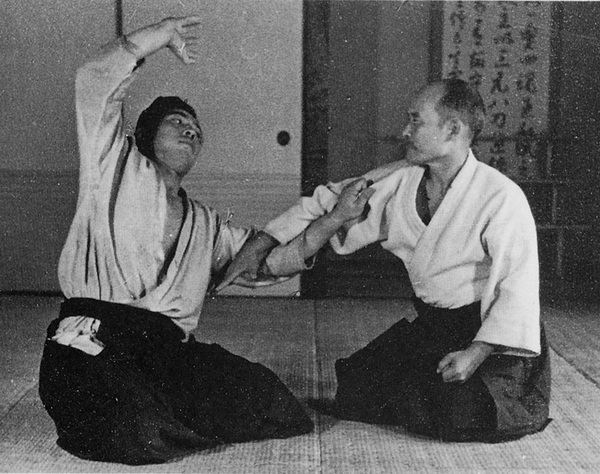
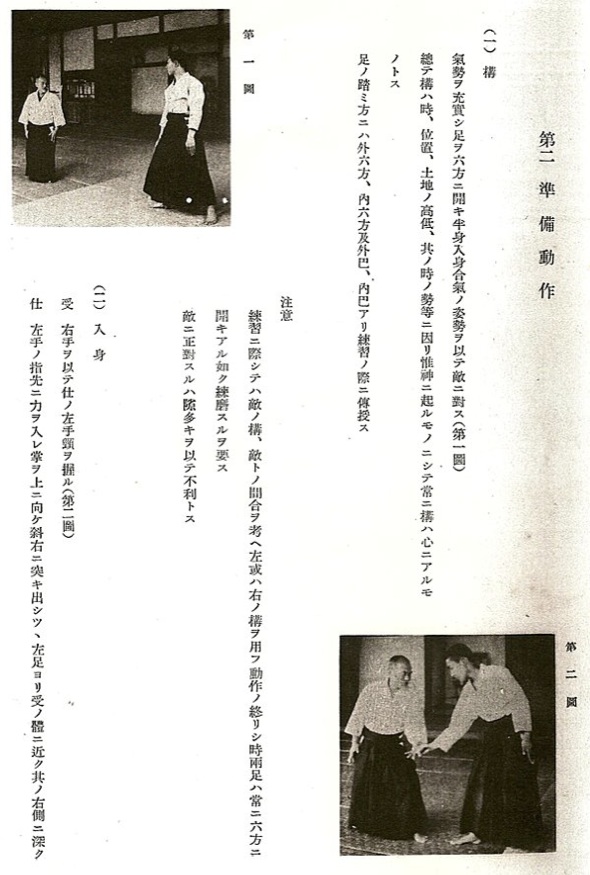
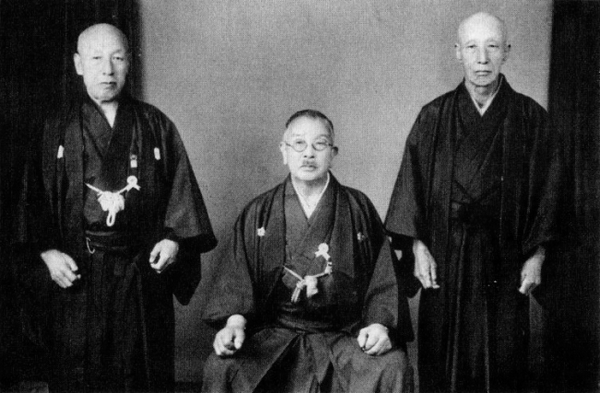

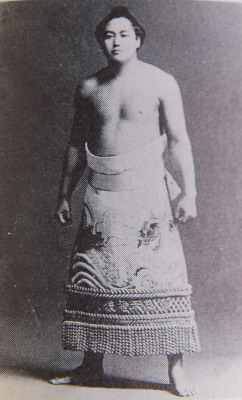
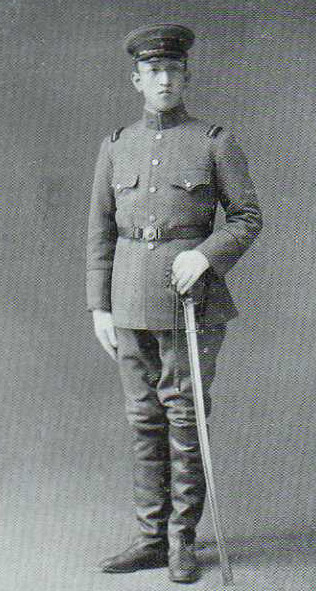






Leave a Reply